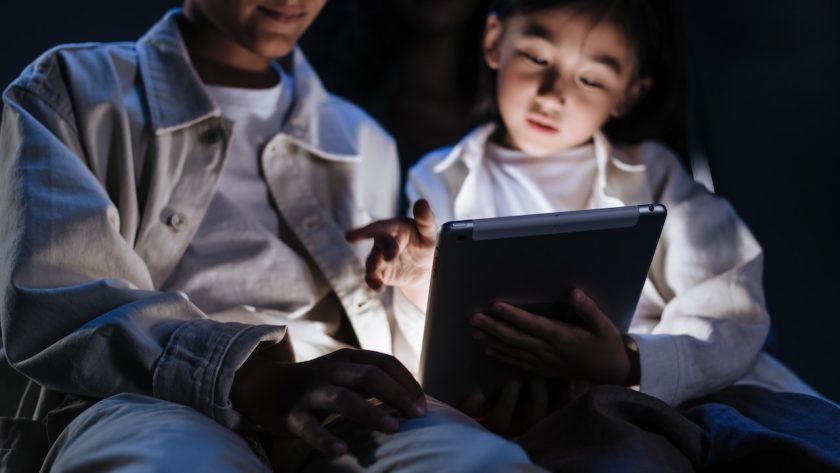The Origins and History of Anime and Manga
The roots of anime and manga can be traced back to Japan, where they have been a significant part of the country’s culture for centuries. While the exact origins are difficult to pinpoint, it is believed that the art of storytelling through visual images began around the Heian period (794-1185). During this time, narrative emakimono, or illustrated hand scrolls, were created to depict legends, historical events, and religious stories.
Over the years, this storytelling tradition evolved and adapted to various art forms, eventually leading to the birth of manga. Manga, meaning “whimsical pictures” in Japanese, refers to the comic book and graphic novel medium that is widely popular today. Its modern form started taking shape in the late 19th century when the introduction of printing technology allowed for mass production of these entertainment materials. Simultaneously, anime, the animated counterpart of manga, began gaining traction, with the first Japanese animation film, “Katsudō Shashin” (1907), contributing to its growing popularity.
As time went on, anime and manga continued to evolve and develop their own unique styles and storytelling techniques. They became deeply ingrained in Japanese popular culture, addressing a wide range of themes, from everyday life and romance to science fiction and fantasy. Today, anime and manga have garnered a massive global following, captivating audiences with their captivating narratives, visually stunning animation, and diverse range of genres. Their impact on pop culture and the entertainment industry is undeniable, making them a fascinating subject to explore.
Understanding the Difference Between Anime and Manga
Anime and manga are two forms of Japanese entertainment that have gained immense popularity worldwide. While both are visually captivating and tell compelling stories, there are key differences between the two mediums.
Firstly, anime refers to animated television shows or movies, often characterized by vibrant colors and dynamic animation. These animated productions bring to life the pages of manga, with the addition of voice acting, sound effects, and music. Anime allows for movement and action, enhancing the storytelling experience. On the other hand, manga refers to Japanese comic books or graphic novels. They are typically black and white, with intricate artwork and panels that allow readers to follow the story at their own pace. Unlike anime, manga relies solely on visual imagery, relying on the reader’s imagination to interpret and engage with the narrative.
In summary, anime and manga are two distinct forms of storytelling. Anime provides a dynamic and animated experience, while manga offers a more static and intimate reading experience. Each medium has its unique appeal, attracting a wide range of fans and igniting a love for Japanese storytelling worldwide.
Exploring Different Genres in Anime and Manga
When it comes to exploring different genres in anime and manga, enthusiasts can delight in the vast array of options available. From action-packed adventures to heartwarming romances, there is something for every preference. One popular genre is shonen, typically targeting young male readers and viewers, characterized by its thrilling battles and courageous protagonists. Examples of shonen anime series include “Naruto,” “Dragon Ball,” and “One Piece,” each capturing the imagination of viewers with their epic storylines and dynamic characters.
On the other hand, shojo is a genre primarily aimed at young female audiences. These stories often revolve around love, friendships, and personal growth, resonating with their target demographic. Popular shojo anime and manga titles include “Sailor Moon,” “Cardcaptor Sakura,” and “Fruits Basket,” each showcasing heartfelt narratives and relatable female protagonists. This genre has gained a significant following by crafting compelling stories that resonate with young girls and women alike.
Additionally, the mecha genre, which centers around giant robots and their pilots, combines elements of science fiction and action. Series like “Mobile Suit Gundam,” “Neon Genesis Evangelion,” and “Code Geass” have captivated audiences with their intricate plots and intense battle sequences. These mecha anime and manga often explore themes of war, morality, and the nature of humanity, adding complexity and depth to their narratives.
Another genre worth mentioning is the slice of life, which focuses on everyday experiences and mundane activities. These anime and manga provide a more realistic depiction of ordinary life, striking a chord with many viewers who can find solace or relatability in the stories. Examples of popular slice of life titles include “K-On!,” “Barakamon,” and “Non Non Biyori,” each offering a gentle and soothing escape from the fantastical worlds often prevalent in other genres.
From the adrenaline-fueled battles of shonen to the tender tales of shojo, the diverse range of genres in anime and manga continues to captivate audiences worldwide. Whether you prefer action, romance, science fiction, or a reflection of everyday life, there is undoubtedly a genre that suits your taste. As the anime and manga industry continues to evolve, so too does the exploration and innovation within these genres, exciting fans with new and captivating narratives.
Popular Anime and Manga Series You Shouldn’t Miss
One popular anime series that you definitely shouldn’t miss is “Attack on Titan”. This critically acclaimed series takes place in a world where humanity must defend themselves from giant humanoid creatures called Titans. With its intense action, complex characters, and thought-provoking themes, “Attack on Titan” has captivated audiences worldwide.
Another must-watch anime series is “One Piece”. This long-running series follows the adventures of Monkey D. Luffy and his crew as they search for the ultimate treasure, the One Piece, and strive to become the Pirate King. With its vibrant animation, diverse cast of characters, and thrilling storyline, “One Piece” has become one of the most beloved and successful anime series of all time.
The Influence of Anime and Manga on Pop Culture
Anime and manga have had a significant impact on pop culture, both in Japan and around the world. This unique form of entertainment has captivated audiences of all ages and has become a global phenomenon. One of the key ways that anime and manga have influenced pop culture is through their distinct visual styles. The vibrant and detailed artwork in anime and manga has inspired not only other forms of media such as cartoons, movies, and video games, but also fashion, design, and even advertising. The iconic big eyes, colorful hair, and expressive facial expressions often seen in anime and manga have become instantly recognizable and have been adopted by artists and designers in various industries.
In addition to their visual impact, anime and manga have also influenced storytelling and narrative techniques in popular culture. Many anime and manga series have pushed the boundaries of traditional storytelling by exploring complex themes and tackling social issues. They have introduced unconventional plotlines, character development, and unexpected twists that have challenged the norms of mainstream entertainment. These innovative storytelling techniques have not only captivated audiences but have also inspired other creators to experiment with their own storytelling styles. As a result, elements of anime and manga can be seen in movies, TV shows, and even literature, shaping the direction of storytelling in modern pop culture.
How Anime and Manga Are Created: The Creative Process
The creation process of anime and manga involves a combination of talent, teamwork, and dedication. It begins with the original idea or concept, which can come from a variety of sources such as manga artists, light novels, or even video games. Once the concept is established, a team of talented individuals, including writers, illustrators, and animators, work together to bring the story to life.
The first step is the development of the storyline and the characters. Writers meticulously craft the plot, ensuring that it is engaging and captures the essence of the original concept. Character designers then meticulously create the visual representations of the characters, taking into consideration their personalities and roles in the story. Once the characters and storyline are finalized, the animators begin their work, bringing the characters to life with fluid movements and vibrant colors. This meticulous attention to detail is what makes anime and manga so visually captivating.
The Impact of Anime and Manga on Global Entertainment Industry
Anime and manga have had a profound impact on the global entertainment industry, captivating audiences from all corners of the world. With their unique storytelling and artistic styles, they have managed to carve out a significant niche within the broader media landscape. The popularity of anime and manga has skyrocketed in recent years, generating billions of dollars in revenue and attracting a dedicated fanbase. This success can be attributed to several factors, including the ability of these mediums to transcend cultural boundaries, the rise of online streaming platforms, and the increasing globalization of pop culture.
One of the key reasons for the impact of anime and manga on the global entertainment industry is their ability to transcend cultural boundaries. Unlike traditional forms of media that are often tied to specific regions or languages, anime and manga have a universal appeal that transcends geographical and linguistic barriers. This has allowed them to find a global audience and gain recognition across different cultures. Furthermore, the themes and characters portrayed in anime and manga often deal with universal issues such as love, friendship, and personal growth, making them relatable to people from various backgrounds. As a result, anime and manga have become a cultural phenomenon that transcends borders and unites fans from all around the world.
Anime and Manga Fan Culture: Conventions and Cosplay
Anime and manga fan culture is not only about enjoying the shows and stories, but it has also created a vibrant community that gathers at conventions and expresses their love through cosplay. These conventions, also known as anime or manga conventions, are large-scale events that bring together fans from all around the world. They provide a space for enthusiasts to immerse themselves in the world of anime and manga, and to connect with others who share the same passion.
Cosplay, short for “costume play,” is a major aspect of anime and manga fan culture at these conventions. It involves dressing up as characters from anime or manga, often with elaborate handmade costumes and carefully crafted props. Cosplay allows fans to embody their favorite characters and brings them to life in a unique way. It is not only a form of self-expression, but also a celebration of the creativity and craftsmanship of the fans. The cosplay competitions held at these conventions showcase the incredible talent and dedication of the cosplayers, making it a highlight for both participants and spectators.
Anime and Manga Merchandise: Collectibles and Must-Have Items
Anime and manga merchandise have become a significant part of the fan culture surrounding these art forms. From action figures and plush toys to clothing and accessories, there is a wide range of collectibles available for enthusiasts to showcase their love for their favorite series. These items not only allow fans to express their passion but also serve as cherished keepsakes that hold sentimental value.
One must-have item for collectors is the anime and manga artbook. These beautifully designed books feature stunning illustrations, concept art, and behind-the-scenes information about the creation of beloved series. Artbooks not only provide a deeper understanding of the artistic process but also serve as a visual feast for fans who enjoy admiring the intricate details and vibrant colors of their favorite characters. Whether displayed on a bookshelf or flipped through for inspiration, these artbooks are a valued addition to any anime and manga enthusiast’s collection.
The Future of Anime and Manga: Trends and Innovations
As anime and manga continue to captivate audiences around the world, the future of this dynamic art form holds many exciting trends and innovations. One notable trend is the growing popularity of online streaming platforms for anime. With the convenience and accessibility they offer, platforms like Crunchyroll and Funimation have become the go-to destinations for fans to indulge in their favorite series. This shift towards digital distribution has not only expanded the reach of anime to a global audience but has also created new opportunities for a diverse range of content creators.
Another trend that is expected to shape the future of anime and manga is the emergence of virtual reality (VR) technology. As VR technology becomes more advanced and easily accessible, it opens up a whole new dimension for immersive storytelling. Imagine being able to step into the world of your favorite anime or manga series and interact with the characters and environments. This blend of technology and storytelling has the potential to revolutionize the way we experience anime and manga, bringing us closer to the action and enhancing the overall sense of immersion. With the constant advancements in VR technology, it is only a matter of time before this futuristic concept becomes a reality.
What is the difference between anime and manga?
Anime refers to animated television shows and movies in Japan, while manga refers to Japanese comic books or graphic novels. Anime is the animated visual adaptation of manga, which is often serialized in magazines before being adapted into anime.
What are some popular anime and manga series that I should check out?
Some popular anime series include “Naruto,” “One Piece,” “Attack on Titan,” “Dragon Ball,” and “Death Note.” As for manga, popular series include “One Piece,” “Demon Slayer,” “Attack on Titan,” “Naruto,” and “My Hero Academia.”
How are anime and manga created?
Anime and manga are created through a collaborative process. The mangaka (manga artist) creates the story and visuals for the manga, while the anime adaptation involves a team of animators, voice actors, directors, and producers bringing the story to life through animation.
How has anime and manga influenced pop culture?
Anime and manga have greatly influenced pop culture around the world. They have contributed to the rise of cosplay, inspired various art styles and storytelling techniques, and have influenced the creation of numerous television shows, movies, and video games.
What is the impact of anime and manga on the global entertainment industry?
Anime and manga have had a significant impact on the global entertainment industry. Their popularity has led to the licensing and distribution of anime and manga outside of Japan, resulting in a growing fan base and increased revenue for the industry. Additionally, anime and manga adaptations have become a trend in Hollywood and other film industries.
What is anime and manga fan culture like?
Anime and manga fan culture is vibrant and diverse. Fans often gather at conventions, where they can meet creators, attend panels, cosplay as their favorite characters, and buy merchandise. Cosplay, in particular, is a popular aspect of fan culture, where fans dress up as their favorite anime or manga characters.
What are some popular anime and manga merchandise items?
Popular anime and manga merchandise includes figurines, posters, keychains, clothing, and artbooks. Collectible items such as limited edition releases and character merchandise are also highly sought after by fans.
What are the future trends and innovations in anime and manga?
The future of anime and manga is likely to see advancements in animation technology, such as the use of CGI and virtual reality. Additionally, there may be an increase in international collaborations and co-productions between different countries. The industry may also embrace more diverse storytelling and representation to cater to a global audience.




